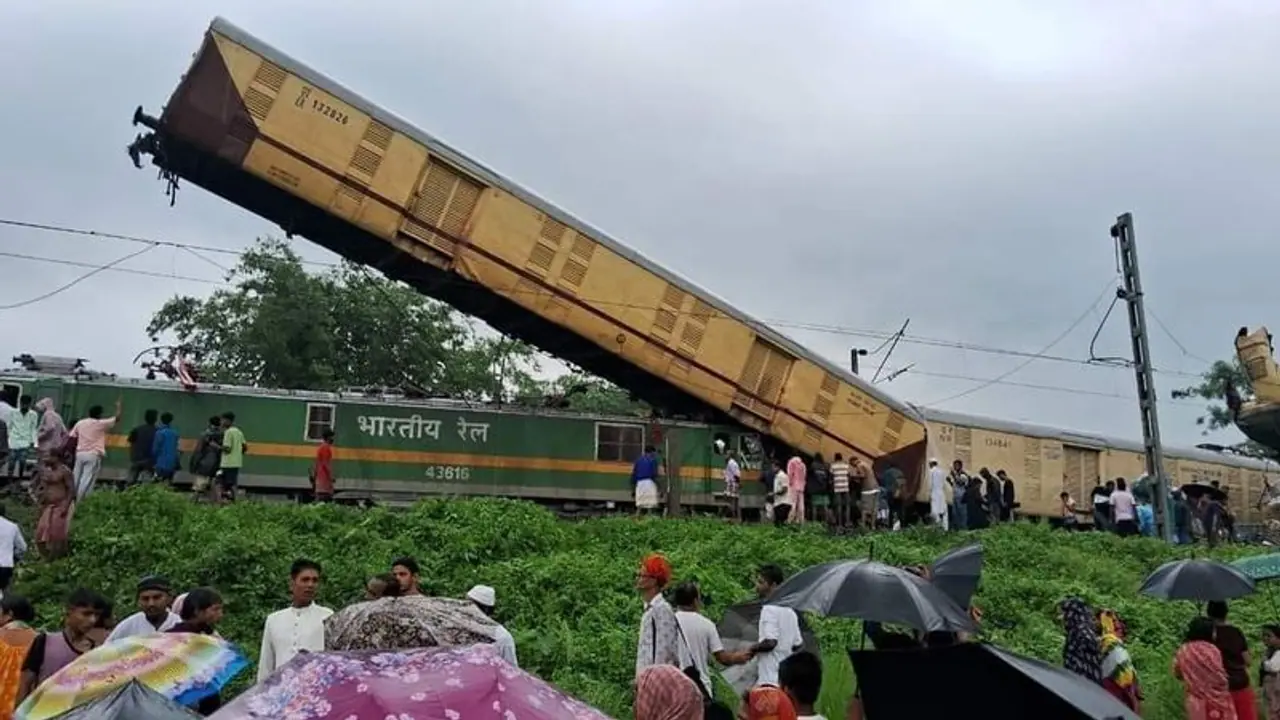Prima facie findings into the Kanchanjunga Express accident in West Bengal show that the goods train violated speed restrictions it had to follow.
The initial investigation into the Kanchanjunga Express incident in West Bengal suggests that the goods train breached speed limits due to a 'defective' automatic signaling system, colliding with a stationary passenger train while 'over speeding', the Railway Board reported on Monday.

The accident, which occurred between Ranipatra Railway Station (RNI) and Chattar Hat Junction (CAT) in Darjeeling district during the morning, resulted in the tragic deaths of seven passengers and two railway personnel, with 41 others injured.
The Railway Board explained that despite receiving authorization for the goods train to pass through all red signals between RNI and CAT due to a malfunction in the automatic signalling system, the train exceeded the permissible speed limit for such conditions. This led to the collision with the Kanchanjunga Express between RNI and CAT.
Responding to concerns, the Board clarified that the goods train's driver, who tragically perished in the incident, had been issued a written authorization, known as TA 912, by the Ranipatra station master, permitting him to proceed through red signals.
The Railway Board refrained from disclosing the exact speed at which the goods train was traveling on that section.
According to the board, the driver of the Kanchanjunga Express adhered to the prescribed procedures for dealing with a malfunctioning automatic signalling system. The driver stopped at all red signals for one minute and proceeded cautiously at 10 kmph. In contrast, the goods train's driver disregarded these protocols and collided with the stationary passenger train from behind.
Explaining the norms, an official of the board said, "The TA 912 was issued to the (goods train) driver and, according to norms, when encountering an automatic signal at "ON" aspect (red signal) and after waiting for the prescribed time, the driver should have proceeded with great caution at a speed not exceeding 15 kmph where visibility is good, and not exceeding 10 kmph where visibility is not good until the next stop signal."
"He has to stop the train for one minute during the day time and two minutes at night at a red signal, and then start moving following the restricted speed norms," the official said.
The authority letter, TA 912, said, "Automatic signalling has failed and you are hereby authorized to pass all automatic signals between RNI and CAT."
It has been noted that there are nine signals between RNI and CAT, and the goods train driver was authorized to pass all of them, irrespective of whether they displayed red, caution (yellow), or double caution (double yellow).
Previously, a railway source informed PTI that the automatic signalling system between RNI and CAT had been malfunctioning since 5:50 am on Monday.
"Train No. 13174 (Sealdah-Kanchanjunga Express) departed Rangapani station at 8.27 am and stopped between RNI and CAT. The reason for the stopping of the train is unknown" the source told PTI.
As per another railway official, in the event of a malfunction in the automatic signalling system, the station master issues a written authorization known as TA 912. This document grants the driver permission to pass through all red signals in the affected section due to the system's defect.
"The station master of Ranipatra had issued TA 912 to Train No 1374 (Sealdah-Kanchanjunga Express)," the source said.
He added that "around the same time, a goods train, GFCJ, departed Rangapani at 8.42 am and hit the Kanchanjunga Express from behind at 8.55 am, resulting in the derailment of the guard's coach, two parcel coaches and a general seating coach (of the passenger train)".
"The collision happened because a goods train disregarded the signal and hit the Kanchanjunga Express, which was on its way to Sealdah from Agartala," Railway Board Chairperson Jaya Varma Sinha told reporters here soon after the accident that took place.
However, the Indian Railway Loco Runningmen Organisation (IRLRO) challenged the railway's assertion that the driver ignored the red signal.
Sanjay Pandhi, the organisation's working president, stated, "It is incorrect on the Railway Board’s part to say that the driver has to stop the train at a red signal for one minute and proceed with restricted speed after getting TA 912.”
"Once a driver gets TA 912, he can proceed with whatever speed because the authority letter suggests that the line in the section is clear. The document said that the loco pilot of the goods train was authorised to cross red signals because they were defective. The authority letter doesn't mention any speed restriction," Pandhi added.
